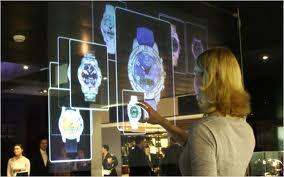Nowadays, technological advances have influenced all human activities, creating new dynamics and ways of communication. In this context, some artists have incorporated these advances in their creative process, giving rise to unique aesthetic expressions referred to in the literature as Generative Art, which is characterized by assigning part of the creative process to a system that acts with certain autonomy (Galanter, 2003). This research work introduces a computational system for creating generative art using a Brain-Computer Interface (BCI) which portrays the user's brain activity in a digital artwork. In this way, the user takes an active role in the creative process. In aims of showing that the proposed system materializes in an artistic piece the user's mental states by means of a visual and sound representation, several tests are carried out to ensure the reliability of the BCI device sent data. The generated artwork uses brain signals and concepts of geometry, color and spatial location to give complexity to the autonomous construction. As an added value, the visual and auditory production is accompanied by an olfactory and kinesthetic component which complements the art pieces providing a multimodal communication character.
翻译:目前,技术进步影响了人类的所有活动,创造了新的动态和通信方式,在这方面,一些艺术家将这些进步融入了他们的创作过程,产生了文献中被称为 " 创造艺术 " 的独特美学表达方式,其特点是将创作过程的一部分分配给一个具有一定自主权的系统(Galanter,2003年)。这项研究工作引入了一个计算系统,利用大脑-计算机界面(BCI)来创造基因艺术,该界面在数字艺术作品中描绘用户的大脑活动。在这方面,用户在创造过程中发挥了积极作用。为了显示拟议中的系统通过视觉和声音表达方式在艺术作品中实现使用者的精神状态,进行了一些测试,以确保BCI装置发送数据的可靠性。所产生的艺术作品使用大脑信号和几何、颜色和空间位置的概念来给自主构造带来复杂性。作为附加价值,视觉和听力制作配有软体和感美学部分,作为提供多式通信功能的艺术作品的补充。




